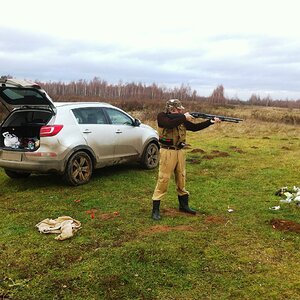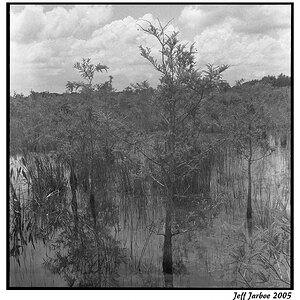Actor
TPF Noob!
- Joined
- Mar 4, 2007
- Messages
- 421
- Reaction score
- 1
- Location
- Ohio
- Can others edit my Photos
- Photos NOT OK to edit
- A powder developer, such as D-76, must be kept from light and air until it is mixed. This means that you must mix the entire envelope at one time. For example you cannot open a package "to make one gallon," extract 1/4 the power, mix one quart, put the remainder back in the package and reseal it. You must "make one gallon" (or whatever).
- #1 is also true for powered fixer and other chemicals.
- Once mixed into a "stock solution" developers must be kept from oxygen but light will not harm them.
- #3 is also true for fixers and hypo-clear.
- Even though tables give developing times for temperatures ranging from 66˚ to 76˚ best results will always be obtained at 68˚.
- Arista Premium film is actually Kodak film.
- Legacy Pro film is actually Fuji Neopan.
- Arista.edu film is actually Fomapan.
- Overexposing film by one stop, then pulling it one stop in processing, will reduce grain, contrast and acutance.
Last edited:


 when it's 99 outside keeping it set any lower than about 80 just runs up the electric bill and makes it feel even hotter outside when you leave the house.
when it's 99 outside keeping it set any lower than about 80 just runs up the electric bill and makes it feel even hotter outside when you leave the house.

![[No title]](/data/xfmg/thumbnail/40/40412-73276feced223de99c761fc2cc279db5.jpg?1619739461)



![[No title]](/data/xfmg/thumbnail/38/38736-5bc266b035e23faf5ad942bdd97466a8.jpg?1619738703)
![[No title]](/data/xfmg/thumbnail/35/35877-b537a0bce18fcb18b610d787610f3d3d.jpg?1619737203)



